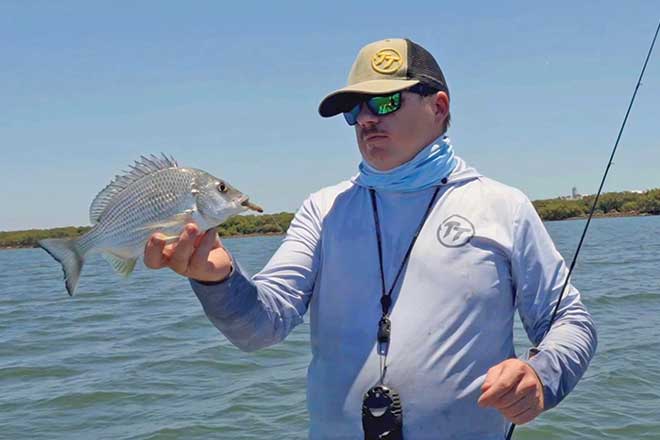So far, we’ve experienced a wet summer in many regions, and a large dump of water into the system often means a tough bite for a period, before everything settles and fires back up again.
These tougher bite periods are a great time to experiment with different presentations and the Ned Rig system – a TT NedlockZ mushroom-style jig head and naturally buoyant Z-Man plastic for a rapid stand-up presentation – has always been a favourite for me when the bite is tough.
In more recent times, I have found another presentation that seems to unlock jaws and get bites when things are shut down and that is micro finesse soft plastics.
I initially started downsizing my presentation in the hope of getting anything to bite and the variety and size of fish being landed on these blew me away.
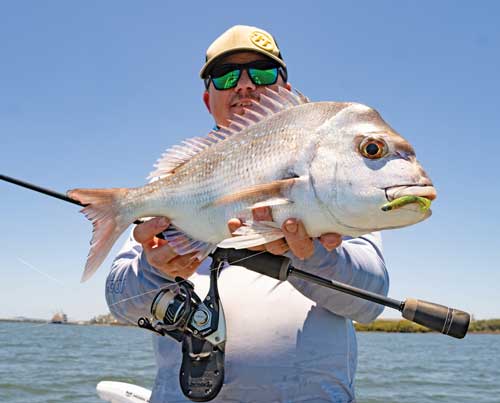
I guess it makes sense because the system fills with tiny creatures washed in from the land via stormwater and all the small prawns and baitfish that spend the early stages of their lives deep in the creeks and mangroves are forced out into larger rivers and estuary systems.
This creates an influx of micro food and the fish home in on that, so they don’t hesitate to eat a micro plastic as part of their diet.
Micro plastics
By ‘micro’, I am talking a couple of inches, or 50mm and under, with my go-to being the Z-Man Micro Finesse BaitZ range.
Already, I’ve had great success on the 1.75” Shad FryZ, 1.75” Tiny TicklerZ and 2” StingerZ, landing plenty of bream to plus 40cm, flathead to 70cm and trevally to plus 55cm.
The cool thing was that I initially threw them to get something to bite, catching a mixed bag of smaller species, however it was the number of big fish bites that impressed me.
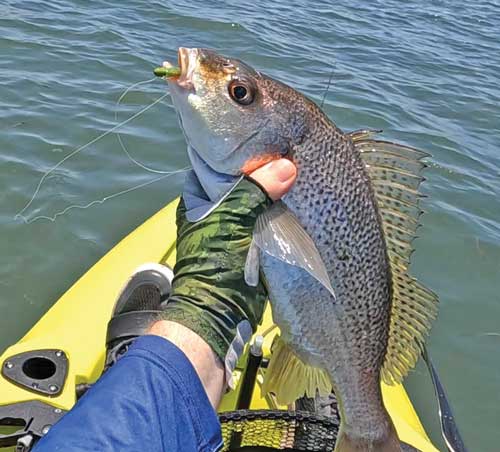
The latest addition to the range is the new Z-Man 1.75” Micro Goat – this little twin paddle tail plastic is next level.
It has a squashed ribbed grub body that rigs well on a jig head, with two paddle feet that give it loads of action in the water.
With the hook being set at the base of these legs and paddle feet, the fish don’t miss it.
I fish this on a slow roll or shaking retrieve over the flats and hop it down edges and over broken bottom.
The first time I fished the Micro Goat was over broken weed flats and I landed a bunch of decent bream, some solid grunter and jumped off a giant herring.
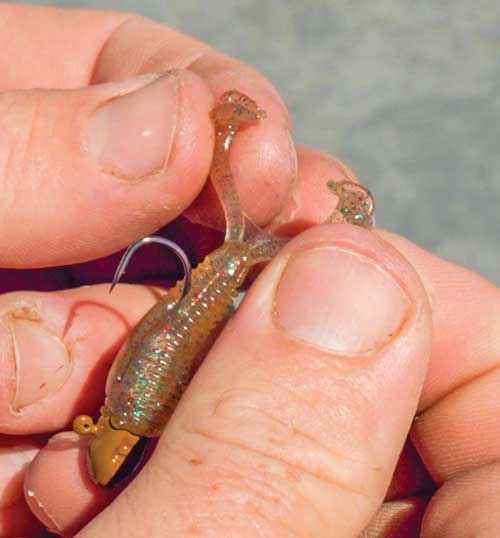
These dumps of rain often fire up species – such as tarpon and giant herring – that are renowned for being picky and zone in on small bait, so get a Micro BaitZ in there.
The second session produced snapper to 55cm, from a 2-4m deep rock bar, followed by bream and flathead around bridge pylons.
It showed the versatility of these Micro BaitZ and the fact that, while they seem small to us, they are worth eating for fish of all sizes.
Micro jig heads
With the small profile size comes the challenge of rigging these plastics effectively, and thankfully Australia’s most comprehensive range of jig heads includes a selection of models to suit.
It comes down to the smallest hook sizes in the range and I fish these plastics on a size 2 in the TT HeadlockZ Finesse range of jig heads, built on fine wire Japanese Gamakatsu hooks for maximum penetration when fishing light lines.
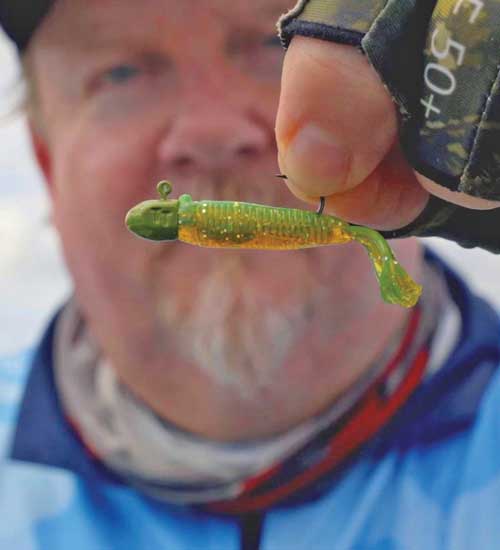
There are also ultraviolet painted models available, so that you can match or contrast plastics to convince finicky feeders such as bream to eat.
The Finesse option was fine until I realised that big fish love to eat the little plastics, this was where the TT HeadlockZ HD jig head in a size 4 came into play.
With a heavy wire Mustad hook, it is brutally strong for a tiny hook, making it a go-to when targeting fish around structure, and when specifically targeting jig head destroying species, such as snapper and mangrove jack, with these tiny plastics.
These hook sizes are available in popular weights for finesse plastics fishing, such as 1/20oz and 1/16oz for fishing canals, mangrove edges and other structure where you want to keep the plastic up in the strike zone.
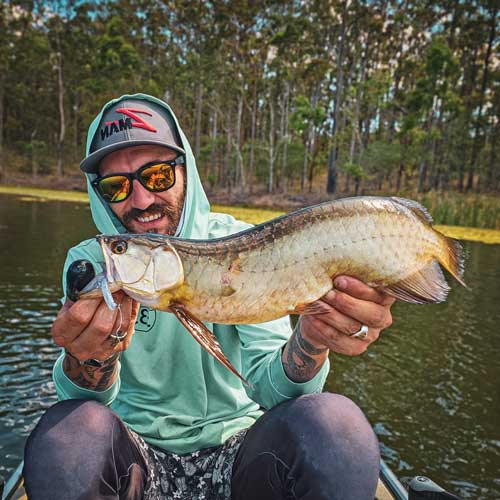
The 1/12oz and 1/8oz then come into play for flats, edges and deeper structure when the tidal flow isn’t heavy.
Lighter options are also available in the TT HWS (Hidden Weight System) jig head, where the weight is concealed inside the plastic for the ultimate finesse presentation.
Weedless options include a size 4 in the unweighted TT ChinlockZ jig head for buzzing those little Micro Goat feet across the surface, however you may need some wind-assisted casting with such a light presentation.
The weighted size 4 TT SnakelockZ Finesse weedless jig head is a great option for sinking these Micro BaitZ into heavy structure, such as weed, lilies and timber, with less chance of snagging or fouling.
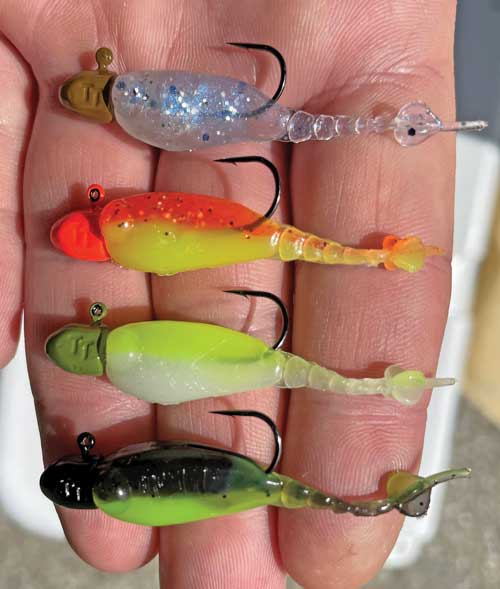
Combo/line/leader
When it comes to casting Micro BaitZ, the finesse theme continues.
It’s extremely important to select a combo capable of casting these light presentations.
I generally fish a light and responsive 7’ 1-3kg spin rod and 1000 size reel loaded with 6lb braid and a leader weight to suit the target species and the environment being fished.
If it’s finicky bream in clear water with minimal structure, 4-6lb may suit, however I find this combo casts fine with the 10lb leader that I run as security against flathead and when fishing structure.
If you are predominantly fishing 1/8oz jig heads, which I often do, then you can also utilise your light and responsive 7’ 2-4kg spin rods and 2500 size reels loaded with 8-10lb braid and your leader of choice.
An 8-carrier (eight strand) braid is generally slicker and finer than a 4-carrier braid, making it a good option for casting finesse plastics, and I will generally fish an Australian-made Platypus Pulse X8 Braid in White colour.
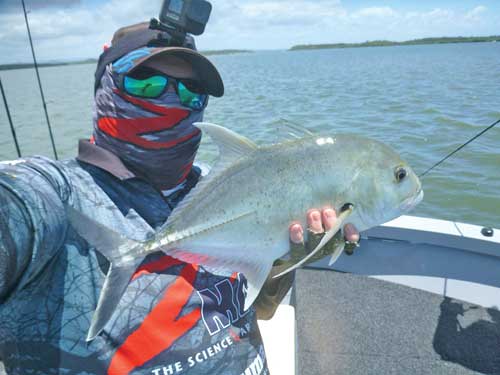
Soft plastic colour
I often think that the profile size and action is more important than colour, yet I have had success when switching between colours based on the available light and water clarity.
A light and natural colour is great when the water is clear and the day bright, giving fish a better view of what’s on offer.
And the reverse when the water is dirty or during low light periods where a darker and more solid offering has a stronger silhouette that in turn makes it more visible to predators.
I will also carry a UV-reactive or fluoro colour with me to change things up – it’s amazing how at times a Firetreuse coloured plastic and bright orange jig head can fire bream up on the flats.
Where
I have had good success fishing Micro BaitZ throughout the river and estuaries, from ankle-deep water to 4m depth.
From flicking drains to shaking them over the flats, hopping them down edges and targeting deeper rubble patches on the slacker stages of the tide.
The key, as always, is to target key fish and bait-holding structure – if the bait is small, match the hatch with a Micro Finesse plastic and mix up your retrieves until you find what works.
I started casting Micro BaitZ out of frustration from a tough bite, following rain, and they have now become a favourite in my kit because of their effectiveness on a wide range of species of all sizes.
From fun sessions with kids fishing plastics off the local pontoon for the first time and landing micro giant trevally, bream and moses perch, to big flatties in weed drains, drag-peeling trevally over the flats and inshore snapper over the shallow reefs and rubble patches.
You’ll be amazed how you can upsize your catch by simply downsizing your plastics when the bite is tough… and even when it’s not.
Five tips for fishing micro plastics:
- Keep the gear light for a long cast
- Fish over and around structure where micro creatures live
- Use the wind to assist with long casts
- Vary your retrieve speed and action to find what works
- HeadlockZ Finesse or HD jig heads to suit your target species and environment.
 Bush ‘n Beach Fishing Magazine Location reports & tips for fishing, boating, camping, kayaking, 4WDing in Queensland and Northern NSW
Bush ‘n Beach Fishing Magazine Location reports & tips for fishing, boating, camping, kayaking, 4WDing in Queensland and Northern NSW

